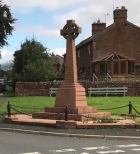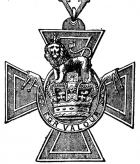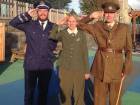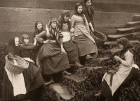Britain since 1930
A popular topic in the past has been Britain since 1930, which usually provides a focus upon World War II. It is possible to retain a study of World War II in Key Stage II provided that the unit of study either links to the locality, or shows how this was a turning point and draws links to knowledge that children have already developed. In this section you will find podcasts, articles and resources to help you plan to teach World War II as a local study or turning point in history.
Sort by:
Date (Newest first) | Title A-Z
Show:
All |
Articles |
Podcasts |
Multipage Articles
-

The new King
ArticleClick to view -

The wheels (and horses…) on the bus
ArticleClick to view -

Three first-class ladies – teaching significant individuals in Key Stage 1
ArticleClick to view -

Trees
ArticleClick to view -

Using cemeteries as a local history resource
ArticleClick to view -

Using oral history in the classroom
Multipage ArticleClick to view -

Using the back cover image: Lest We Forget
ArticleClick to view -

Using the back cover image: Oxford Street in the 1960s
ArticleClick to view -

What do children think about the the royal family and the coronation of King Charles III?
ArticleClick to view -

What’s in your pocket, Peg?
ArticleClick to view -

Women and space: reaching for the stars
ArticleClick to view -

Women in parliament since 1918
ArticleClick to view -

World War I: widening relevance in the modern world
ArticleClick to view -

World War II evacuation project - A living history experience
ArticleClick to view -

World War II evacuees and Kindertransport
ArticleClick to view -

World War II medals at KS2 and Remembrance Day
ArticleClick to view -

World War II: breathing life into a local history enquiry
ArticleClick to view -

‘Come all ye fisher lassies’
ArticleClick to view

